Habitat and Health: Meeting the Gold Standard
Here at Twin Cities Habitat, we believe in using practices that ensure our homes are safe, decent, affordable – and promote good health for our...
3 min read
 Twin Cities Habitat for Humanity
:
9:00 AM on January 6, 2020
Twin Cities Habitat for Humanity
:
9:00 AM on January 6, 2020
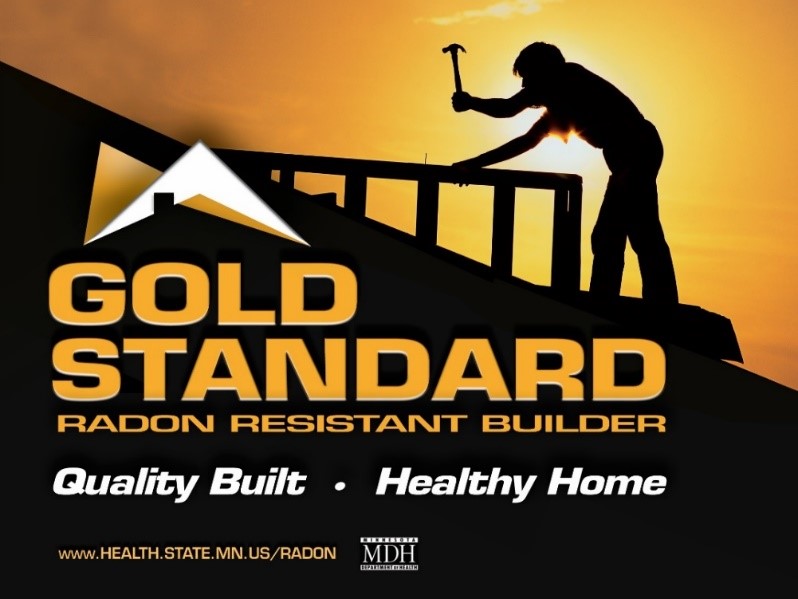
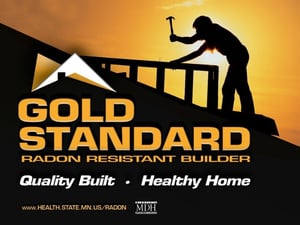 As a Gold Standard Radon Resistant Builder and January being National Radon Action Month, Twin Cities Habitat for Humanity encourages all households to test their homes for radon. Here are some facts and links to find out more about radon, courtesy of the Minnesota Department of Health.
As a Gold Standard Radon Resistant Builder and January being National Radon Action Month, Twin Cities Habitat for Humanity encourages all households to test their homes for radon. Here are some facts and links to find out more about radon, courtesy of the Minnesota Department of Health.
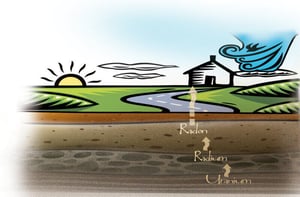 Have you wondered if radon is a problem in your home or wanted to get more information on radon?
Have you wondered if radon is a problem in your home or wanted to get more information on radon?
Radon is found in nearly all soils. It is a colorless, odorless radioactive gas that comes up through the soil. Levels in outdoor air are usually much lower than indoor air.
It is a problem in houses because radon levels can accumulate indoors. Houses can suck air from the soil and that draws radon gas in through the foundation. The soil around your home is porous so the radon gas is able to move through the dirt and rocks and into the basement through pathways, like cracks in the concrete slab, and accumulate in the house.
Radon is a health concern because studies have shown that over time breathing in radon gas can increase your risk of lung cancer. When breathed in, the radioactive particles from radon gas can damage the cells that line the lung. Radon is the second leading cause of lung cancer, and the leading cause in non-smokers. In the United States, it is estimated that radon exposure causes 21,000 lung cancer deaths a year. This lung cancer risk increases for those who smoke.
The Environmental Protection Agency (EPA) recommends taking action to reduce radon in homes that have a radon level at or above 4 picocuries per liter (pCi/L).
A large number of radon tests have been conducted across Minnesota. The results show that 40% of those tests were elevated (at or above 4.0 pCi/L). There are elevated levels in all counties, making radon a widespread concern. You can’t tell if a home will have high radon by its age, tightness, construction features, or soil type. Homes that are next door to each other can have different indoor radon levels, making a neighbor’s test result a poor predictor of radon risk. So, it’s a good idea to test your home for radon.
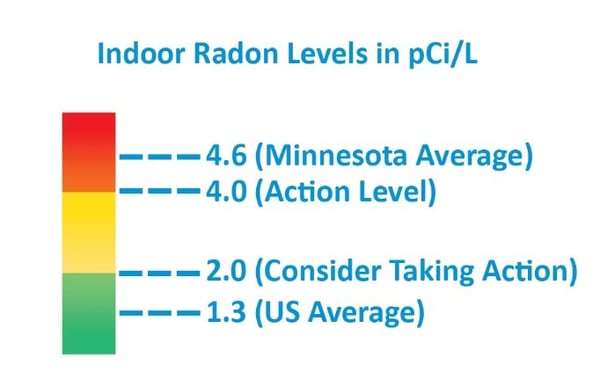
Testing is the only way to know if your home has elevated radon levels. There are generally two tests that are used to detect radon: a short-term test and a long-term test. The Minnesota Department of Health (MDH) recommends conducting a short-term test first. This is usually completed in only 3 to 7 days. If your short-term test result is greater than 8 pCi/L, then you conduct one more short-term test. On the other hand, if that first short-term test result is between 2 to 8 pCi/L, consider conducting a long-term test. If the second test result is at or above 4.0 pCi/L, then you should take action to reduce your household radon levels. Mitigation could be considered at levels between 2 and 4 pCi/L.
It’s recommended that you test a home that you are buying, for example, as part of a home inspection. While there is no testing requirement in home sales, state law requires radon disclosure and notification. Testing and, if necessary, installing a reduction system can be negotiated between buyers and sellers, just as home inspections and other repairs are dealt with during home sales.
If your home’s radon level is at or above 4.0 pCi/L then you should hire a certified radon mitigator to install a system to reduce radon concentrations. A list of certified mitigators is available at the MDH website at MDH Radon . The goal of a radon mitigation system is to reduce the indoor radon levels to below the EPA action level of 4.0 pCi/L, and many systems reduce concentrations below 2.0 pCi/L. After a mitigation system is installed, the home should be re-tested to verify radon reduction.
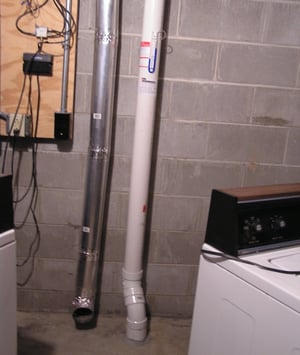 The PBS series “Ask This Old House” visited a home in Minneapolis to install a radon mitigation system. The episode shows what to expect from a radon professional and how a system is installed.
The PBS series “Ask This Old House” visited a home in Minneapolis to install a radon mitigation system. The episode shows what to expect from a radon professional and how a system is installed.
A radon mitigation system added to an existing house usually involves a PVC pipe placed through the house, starting under the slab, sump hole, or drain tile (typically one suction point is sufficient). Radon gas is drawn out of the soil with a fan in the attic and expelled through the roof.
The radon fan should be located in an unconditioned space, such as the attic or outside. This fan will pull the radon gas from the soil and help expel the gas above the roof line.
When building a home, consider asking your builder to activate the passive system by adding a fan. Since 2009, all new homes are required by code to be built with passive radon resistant features. These are somewhat effective at reducing radon, but about 1 in 5 of these newer homes still have radon above the recommended action level. MDH encourages builders to activate the passive radon system features through the addition of a radon fan. In addition, new home buyers should request this feature be added during construction. In new homes with radon fans, MDH has found very low radon concentrations similar to background levels. MDH has a list of the builders that offer fans to activate the passive systems at Gold Standard Radon Resistant Builders.
For more information about radon, contact:
Minnesota Department of Health
health.indoorair@state.mn.us
651-201-4601
Your gift unlocks bright futures! Donate now to create, preserve, and promote affordable homeownership in the Twin Cities.
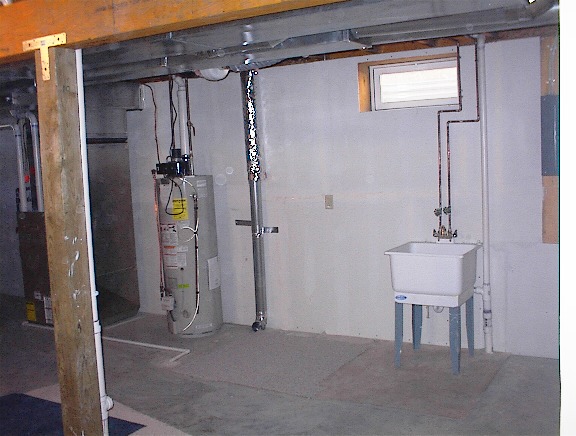
Here at Twin Cities Habitat, we believe in using practices that ensure our homes are safe, decent, affordable – and promote good health for our...

Minnesota’s air currently meets all federal air quality standards. However, even levels of air pollution below the standards can affect people’s...
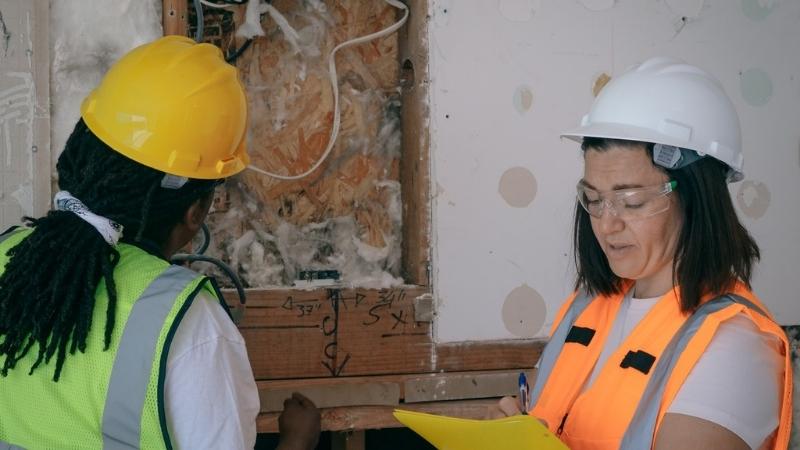
It’s estimated that people spend about 90% of their lives indoors. This highlights how important our homes are to our overall health. On a global...